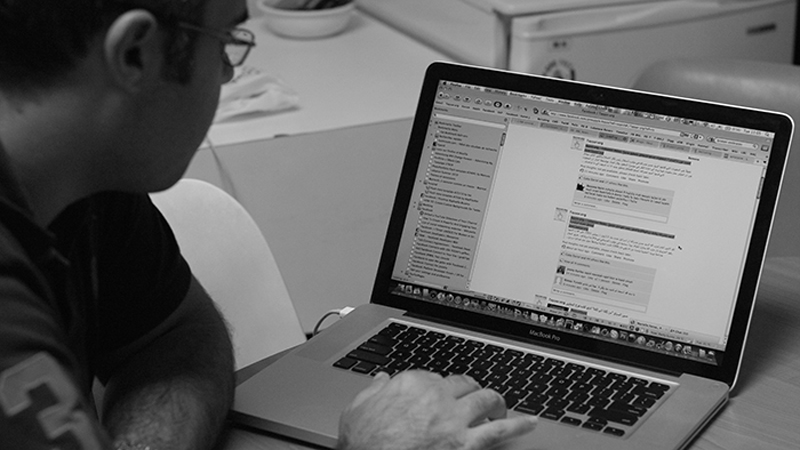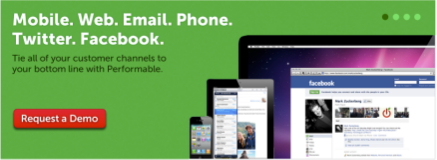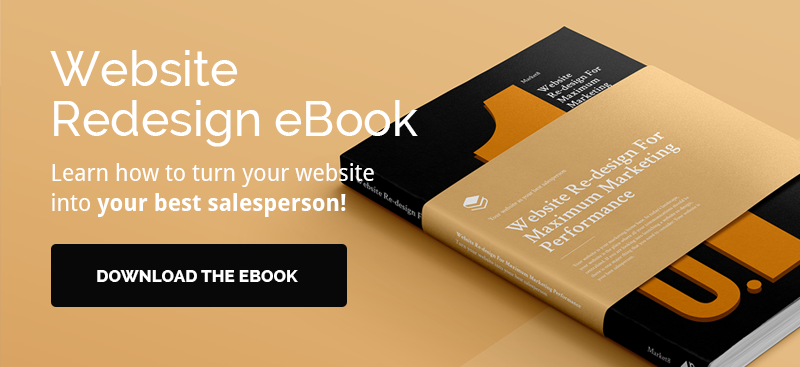
To sell more of your services as a B2B and retain loyal customers for a long time, one thing stands out as more important than anything else. You have to get inside the heads of your B2B buyers.
Recently, Neil Patel, the analytics guru behind Quick Sprout wrote a monstrous compendium on understanding consumer psychology.
Patel's idea was knowing how your buyers think will obviously help to boost your sales.
You can give them more of what they want and are looking for, so much more efficiently, when you know how their minds work. We couldn’t agree any more.
Why do they decide, when do they decide—what’s their thought process like during every point of the buying process? It’s in your best interest to understand how your buyers want to be sold to. That’ll empower you to make the necessary changes on your site to sell to them how they want to buy.
In this article, we’ll address B2B consumer psychology by detailing the five most important things that you should know:
-
Deep analysis into how the minds of B2B buyers work
-
The importance of emotion in B2B
-
The use of color in B2B psychology
-
The importance of pricing in B2B
-
Common factors in B2B decision-making
A Mental Probe Into How the Minds of B2B Buyers Work
Your B2B buyers have certain, deep-seated needs that you must satisfy if you want them to turn from leads into solid conversions. Giving them exactly what they crave on your B2B site is the key to turning leads into buyers and keeping them as long-term, repeat customers.
Today’s consumer is smarter than ever because he’s had years of experience of weeding his way through shady Internet marketing or high pressure sales tactics. These include things like questionable banner ads and spam emails, as well as a sales toolkit based exclusively on offline sales rep interactions.
“Today’s consumer is more self-driven than ever, they self research, self nurture and self educate and when they are pretty far down, that’s when they talk to sales,” said Rishi Dave, Executive Director of Digital Marketing at Dell

To wit, 60% will have finished their buying journey through self-directed research prior to even talking to your sales reps.
Here’s what motivates today’s B2B buyer:
Personal Gain – Your B2B buyer doesn’t care about you; he cares about his pain points and what your products or services can do to solve his problems. That’s why your B2B buyer demands to see the immediate benefit of your products or services.
Delight – He’s looking for products or services that don’t just solve his problems, but go beyond into giving him respite from his daily troubles.
Social Influence – Human beings are hardwired to first trust recommendations from people they know above anything else. This even applies to people who think of themselves as independent-minded. This explains why social shares (Twitter, Facebook, LinkedIn) are so influential to buyers.
Being Shown Attention – B2B buyers really care about and respond to the use of the word “you” in marketing, which is why that word should feature dominantly on your B2B site. The word “you” establishes a quick rapport with your buyers and informs them that you’re attending to their wants and needs.
Familiarity – In psychology, the best predictor of future behavior is past behavior, with some exceptions. It’s no surprise that buyers are, therefore, motivated by their past experiences. This especially applies in crucial decision-making, which is based on what has worked for buyers in the past.
Security – The Internet can have a bad reputation for scams, which is why B2B buyers value assurances and guarantees that their personal information, like credit card information and personal data, is safe. That’s why B2B buyers need to see proof of security on your B2B site, things like security guarantees as well as badges.
Now you know what makes your B2B buyer tick, and this will greatly help you to understand why emotion is so important to them.
The Importance of Positive Emotion in B2B to Increase Conversions and ROI
Knowing how the minds of your buyers work is pretty much pointless unless you can directly relate to them. You do that through the use of positive emotion.
Your B2B buyers are emotional creatures. That’s why it makes sense to make a strong connection to them through emotion. There are two types of emotions: positive and negative ones.
Successful marketing campaigns are based on positive ones, as your B2B buyers respond more favorably to those. When you use positivity in your marketing, you increase not only your long-term conversions, but also your long-term return on investment.

So how can you invoke emotion in your buyers? The answer’s simple: It’s your brand personality as well as your brand identity. Here’s how you define brand personality:
“The set of attributes that give an organization a distinct character.”
Brand personalities take a good amount of thought and planning, but they’re well worth the investment to produce strong, positive emotions in your buyers. Brand personalities can be inspirational, fun, humorous, adventurous, irreverent, daring—basically, any attribute that speaks positively to the brand’s target audience. They come from a company’s leadership, and they’re characterized by whatever you want your brand to be.

Everyone in your company has to be on the same page regarding your brand identity, so that it can be enforced across all channels of marketing consistently. This includes the higher-ups (CEOs) down to entry-level team members and middle managers, too.
Here are some concrete steps to come up with your brand identity:
-
List broad keywords that you think represent your brand image right now
-
List broad keywords that you want your brand to be associated with in public perception in the future
-
Narrow the lists of keywords down to only the most vital two or three
-
Come up with a message architecture: a hierarchy of communication goals that outline your brand’s most significant attributes
-
Create a style guide to unify your B2B’s messaging via a thorough group of instructions for your marketing efforts
You can even build on the effectiveness of your brand personality by adding the use of color into the mix of how you sell to your buyers.
The Use of Color in B2B Psychology
Colors don’t just add vibrancy and life to a B2B website—they’re part of a psychological strategy to provoke the most favorable response from your B2B buyer. Colors are categorized as visual cues, which are powerful though subtle forces in your marketing arsenal. So how important is color really?
According to Kissmetrics: Buyers actually put color above other factors like texture, smell and sound when evaluating new products.
A key component of color psychology to master is what each specific color means to your buyer personas. This has powerful implications for web design on your B2B site’s landing page, for example.
Every color means something different. Really quickly, these can be:
-
Yellow – Represents optimism and youth; grabs attention of window shoppers
-
Red – Represents energy and creates urgency; good for clearance sales
-
Blue – Represents security and trust; commonly used for banks and businesses (including B2Bs)
-
Green – Represents wealth and easy eyeball processing; used to relax customers
-
Orange – Represents aggression; ideal for call to action buttons
-
Pink – Represents femininity; great for marketing products and services to females
-
Black – Represents power; used in luxury marketing
-
Purple – Represents soothing and calm; ideal for beauty products and services
Here's how this color psychology can apply directly to your B2B website:
-
Use blue (which establishes trust and security) as the background color of your landing page
-
Use orange for your call to action buttons (urging your buyers to sign up or get in touch with your customer reps for more information)
-
Use red (for creating urgency) in your copy if you have a sale for a specific service that will only last a limited time
-
Use pink in your value proposition statements if your services’ target audience is mainly females
-
Use green (to get customers to relax) in the padding of your landing page
Another important aspect of color psychology is how it can positively affect your conversions on your B2B site.
According to another insightful Kissmetrics infographic, changing call to action button colors helped increase conversion rates for various companies.
For instance:
Performable, a marketing automation company now owned by HubSpot, got a 21% jump in conversions after changing its call to action button from green (relaxing) to red (urgency).

Ript Apparel, a T-shirt and graphic tee maker, saw a 6.3% rise in conversions when it changed its call to action button from green (relaxing) to yellow (optimism), in addition to improving it's CTA copy.

Bonus mention: When Heinz Ketchup changed the color of its well-known ketchup bottle from red to—get this—green, the company actually saw a spike of $23 million in additional sales in the first seven months of this marketing experiment.

Of course, all of this consumer-psychology knowledge leads up to the most important thing: how much you can get for your services. We look at that in the next section.
The Importance of Pricing in B2B
Okay, now you know what motivates your buyers, how emotion plays a huge part in marketing to them, and how color is effective at persuasion on your landing page. All that’s left is to handle pricing, so that your buyers make the ultimate conversion and buy.
Laying out your pricing will also have an impact on how many sales your B2B makes. If you think that selling your services for less than your competitor or stressing low, low prices is all that matters—then think again.
Your B2B buyer won’t necessarily be impressed with deals or offers that tout the lowest price between you and your competitors.
It may surprise you to know that they actually care more about both the value and return on investment (ROI) that they’ll get from buying your product or service. After all, cost is relative to each business, but all businesses value the saved time and benefits that they can’t get with any other product or service.
In short, tailor your marketing message to appeal to what B2B buyers care most about: what they will get in return from your product or service, not how much they’ll have to spend for it.
One company that epitomizes this focus-on-benefits angle is Bidsketch. Bidsketch’s business model is to sell templates to both agencies and freelancers. It’s value proposition is that it’ll save customers a lot of time and money on what would normally be the difficult process of crafting client proposals.
On its homepage, Bidsketch makes clear that it can save customers up to 2 hours and 15 minutes on drafting proposals. In sum, it’s helped its customers earn more than $260,000,000. This is getting inside the head of customers very persuasively.
Another thing you can take to the bank about your B2B buyers is that they won’t necessarily choose the lowest price if you offer it. In fact, you should be wary of competitive pricing because you might accidentally push them to compare your product or service to your competitors’. It can result in buyers becoming risk-averse, cautious and distrustful.
On the other hand, implicit comparisons, which occur when buyers take the initiative themselves to compare products or services, can actually help you snag higher prices from buyers.
All this goes to show that how you lay out your pricing will be monstrously influential on your buyers, so it’s best to be thoughtful about it. Even giving them too many choices can lead to paralysis and abandoned conversions.
So what’s your best bet when it comes to pricing and consumer psychology? Skip enticing buyers with lowest-price guarantees and instead promote the unique benefits and time-saving advantages of your product or service.
Common Factors in B2B Decision-Making
Finally, we thought it would be useful to you to consider some of the most recurrent factors that figure in your buyers’ decision-making process. These are issues that will always come up in every buying process, so we recommend that you understand them well.
First of all, your buyers have to be made aware that they should solve the problem their organization is experiencing.
At this stage of the buying process your buyers know that they have pain points, yet they’re not actively committed to solving them with a product or service solution, so you have to initiate a priority shift. You want buyers to make the decision to start researching solutions to their problems.
Once they’ve accepted that something has to change in their business approach, they’ll move to researching possible solutions.
Here, your B2B buyer will throw himself into research to find expert opinions and plausible outcomes that his company can reach. You’ll want to position your company as the authority in finding a solution at this point in the decision-making process.
This includes how your solution mitigates their risks and pain points, getting them to think broadly about overlapping issues that impact their project, and establish clear-cut distinctions between you and your competitors.
By now, your buyer is virtually ready to bite, and he’s almost ready to make the all-important purchasing decision. Before he does, though, he’ll have to validate his thought process, so he can be sure that he’s made the right decision.
That’s why it’s vital that you help persuade your buyer to go with you by leaving no doubt in his mind that your product or service is his only solution. How do you do that? By highlighting customer success stories and stressing the gains your buyer will receive by choosing your solution.
Conclusion
The B2B buyer is a complicated creature who’s influenced by all sorts of things and has all kinds of biases. It’s your job as a B2B company to intimately understand exactly what he’s thinking.
- What’s he looking for on your site?
- Have you delighted him with your marketing message and brand personality?
- Have you made crystal clear to him that he’ll obtain personal gain when he uses your product or service?
- Have you used the right colors to move him down the sales funnel and entice him to click on the all-important call to action?
To all these questions, you should be answering, “Yes,” if you’ve done your job. If you’re not, then you need to regroup—quickly.
Understanding B2B consumer psychology is the ace up your marketing sleeve. It’s the difference between more conversions and many visitors leaving your site in droves. Don’t take that chance. Get into the minds of your B2B buyers, make them happy, and see positive results for your B2B.







